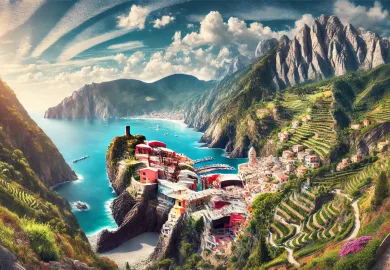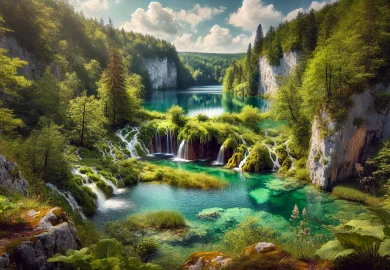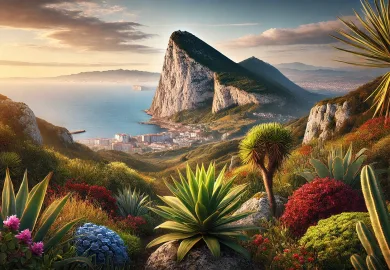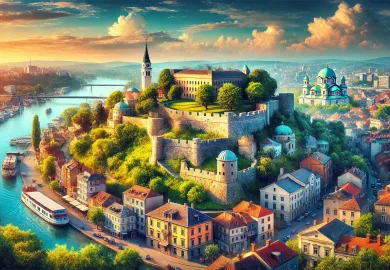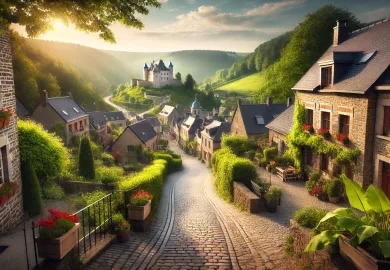
The Tokelau Islands, a group of three small atolls nestled in the Pacific Ocean, are some of the most remote and untouched islands on the planet. For many travelers seeking to escape the typical tourist paths, Tokelau represents an untapped paradise, offering an intimate glimpse into Polynesian culture, untouched landscapes, and stunning natural beauty. This article delves deep into the unseen places of Tokelau, exploring its hidden gems and offering a unique travel experience that few have ventured to enjoy.
Why Tokelau Is a Hidden Gem in the Pacific
Despite its relative obscurity on the world map, Tokelau offers an abundance of pristine beaches, vibrant coral reefs, and a way of life steeped in tradition. The remoteness of the islands, reachable only by a boat journey from Samoa, keeps them largely untouched by modern tourism. This isolation is one of the many reasons why Tokelau remains an extraordinary destination for those craving an authentic, undisturbed experience.
The three atolls—Atafu, Nukunonu, and Fakaofo—each offer their own unique charm. Whether it’s the crystal-clear waters teeming with marine life or the traditional Polynesian hospitality, Tokelau’s allure lies in its simplicity and the richness of its natural and cultural landscapes. In addition to its stunning geography, the islands provide an opportunity to experience an eco-conscious way of life, as Tokelau is striving to become one of the world’s first nations fully powered by renewable energy.
Exploring Atafu: The Northernmost Atoll
Atafu, the northernmost atoll of Tokelau, is a treasure trove of natural beauty and Polynesian culture. While most visitors focus on larger islands in the Pacific, Atafu offers something refreshingly different for those who prefer off-the-beaten-path destinations.
The atoll is characterized by its breathtaking coral reefs, which create a magical underwater world for snorkeling and diving enthusiasts. The reefs are home to a variety of marine species, including colorful fish, sea turtles, and rays, making every underwater journey a feast for the eyes.
On land, Atafu maintains a strong sense of tradition, with residents still practicing fishing, weaving, and other crafts passed down through generations. As you wander through the small village of Atafu, you’ll be greeted with friendly smiles and a sense of community that seems untouched by the hustle and bustle of the outside world. It’s a place where time slows down, and visitors can truly connect with nature and the local way of life.
Nukunonu: A Lagoon of Tranquility
The atoll of Nukunonu offers travelers a quieter, more tranquil experience compared to its neighboring atolls. Known for its expansive lagoon, Nukunonu is a sanctuary for wildlife, especially for migratory birds. The calm, shallow waters of the lagoon make it perfect for kayaking and paddleboarding, offering travelers the chance to explore unseen corners of the island that are accessible only by water.
For those interested in the cultural side of Tokelau, Nukunonu is also home to ancient Polynesian traditions that have been preserved for centuries. Locals still engage in traditional fishing techniques using hand-carved canoes and participate in communal events that bring the entire island together. By visiting Nukunonu, you are not only experiencing its serene beauty but also witnessing a way of life that has remained largely unchanged for generations.
Beyond the lagoon, Nukunonu’s landmass is dotted with coconut palms and small patches of indigenous vegetation, providing an ideal setting for a peaceful retreat. Whether you’re relaxing under the shade of a tree or walking along the lagoon’s edge, Nukunonu invites you to immerse yourself in a world far removed from the distractions of modern life.
Fakaofo: History and Tradition Combined
Fakaofo, the southernmost atoll in Tokelau, is rich in historical significance and offers a deep dive into the islands’ ancient heritage. Often referred to as the “Seat of Kings,” Fakaofo was historically a center of power and governance in Tokelau. For travelers with an interest in history, Fakaofo provides a unique opportunity to explore ancient marae (sacred sites) and learn about the leadership structures that once shaped the islands.
The people of Fakaofo are known for their warm hospitality, often welcoming visitors to participate in cultural ceremonies and festivals. These events are a celebration of Tokelau’s Polynesian heritage, filled with traditional dances, songs, and feasts featuring locally caught fish and tropical fruits.
Fakaofo is also a hotspot for eco-conscious travelers, as the island has adopted sustainable practices to protect its fragile environment. Solar energy powers the majority of homes, and local initiatives encourage the preservation of Tokelau’s rich biodiversity. Visitors are invited to participate in eco-tours that highlight the islands’ efforts in conservation, providing an educational aspect to the overall experience.
Uncovering the Secrets of Tokelau’s Untouched Beaches
While much of Tokelau’s charm lies in its cultural and historical significance, the islands’ unspoiled beaches are equally captivating. Unlike the crowded tourist beaches of other Pacific islands, Tokelau’s beaches are peaceful and often completely deserted, offering the perfect setting for a secluded getaway.
The beaches of Tokelau are composed of powdery white sand, framed by lush greenery and lapped by the turquoise waters of the Pacific. These pristine shorelines are ideal for swimming, sunbathing, or simply enjoying the view of the endless horizon. If you’re lucky, you might even spot some of Tokelau’s rare wildlife, such as seabirds nesting on the coast or schools of fish gliding just beneath the surface.
For those seeking more adventure, the surrounding waters are perfect for water sports like snorkeling and diving. With vibrant coral reefs located just offshore, the islands offer an underwater wonderland that remains largely unexplored by outsiders. Tokelau’s beaches are a haven for solitude seekers, making them one of the island’s most prized yet little-known treasures.
Sustainable Tourism in Tokelau: Leaving Only Footprints
In recent years, Tokelau has been at the forefront of promoting sustainable tourism, with a focus on preserving its natural environment and traditional way of life. The government has made efforts to limit the number of visitors to the islands, ensuring that tourism remains eco-friendly and that the local communities continue to thrive without being overwhelmed by external influences.
The emphasis on sustainable living is evident throughout Tokelau, where solar power provides energy, and rainwater is harvested for drinking and irrigation. Tourists are encouraged to embrace the islands’ green initiatives, from staying in locally-owned eco-lodges to participating in community-led conservation projects. This commitment to sustainability not only protects Tokelau’s fragile ecosystems but also allows visitors to engage in responsible tourism that respects both nature and culture.
By visiting Tokelau, you’re not only gaining access to one of the world’s last hidden paradises but also contributing to its preservation for future generations. The islands offer a unique opportunity to experience the beauty of the Pacific in its most untouched form, without the impact of mass tourism that has affected so many other destinations.
With its pristine environment, rich cultural heritage, and commitment to sustainability, Tokelau stands as a beacon for those seeking authentic travel experiences in a world that’s becoming increasingly commercialized. If you’re looking for a destination that offers true escape, Tokelau’s unseen places are waiting to be discovered, promising adventure, tranquility, and an unforgettable connection with nature and Polynesian culture.

